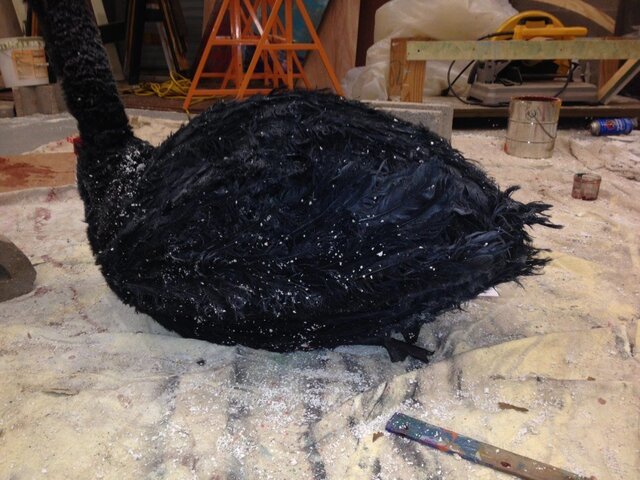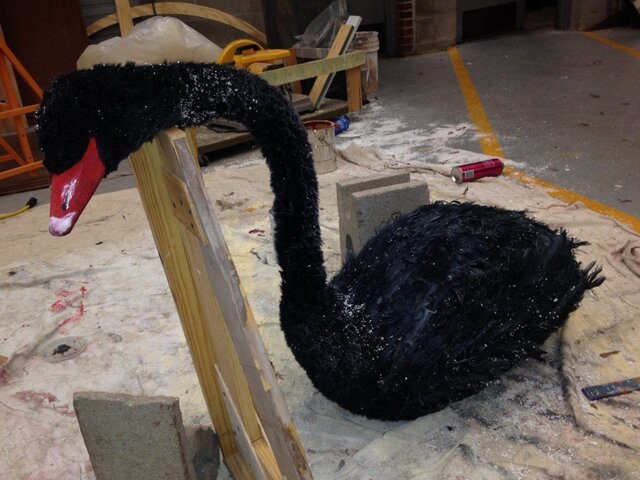MarshallPope
Well-Known Member
Well, here's a rare CB prop thread.
I'm currently working on a dead black swan that has to be dragged onstage by its neck for an upcoming show. I've finished the interior structure and form, carved the head, built the webbed feet, and made a convincing neck. Now, I'm thinking through the feathers and wanted to see if anyone has done similar projects and has any suggestions. I'm hoping not to have to individually glue tons of feathers to the bird. The route that I'm planning on taking is to cover the thing with fake fur treated with hair spray or diluted Flexbond to squosh the fur down into something more resembling feathers. I figure that I'll still need to glue in some real feathers in key spots, but the fur will be a good start. I haven't tested this yet, though, so we'll see if I can even make it do what I'm imagining.
A propmaster friend suggested checking Halloween stores for angel wings or something else that could be cannibalized, so I'll be looking into that tomorrow. Ideally, I would find some sort of feathered fabric, but I haven't had any luck sourcing that.
Any suggestions?
Thanks!
Marshall
I'm currently working on a dead black swan that has to be dragged onstage by its neck for an upcoming show. I've finished the interior structure and form, carved the head, built the webbed feet, and made a convincing neck. Now, I'm thinking through the feathers and wanted to see if anyone has done similar projects and has any suggestions. I'm hoping not to have to individually glue tons of feathers to the bird. The route that I'm planning on taking is to cover the thing with fake fur treated with hair spray or diluted Flexbond to squosh the fur down into something more resembling feathers. I figure that I'll still need to glue in some real feathers in key spots, but the fur will be a good start. I haven't tested this yet, though, so we'll see if I can even make it do what I'm imagining.
A propmaster friend suggested checking Halloween stores for angel wings or something else that could be cannibalized, so I'll be looking into that tomorrow. Ideally, I would find some sort of feathered fabric, but I haven't had any luck sourcing that.
Any suggestions?
Thanks!
Marshall




